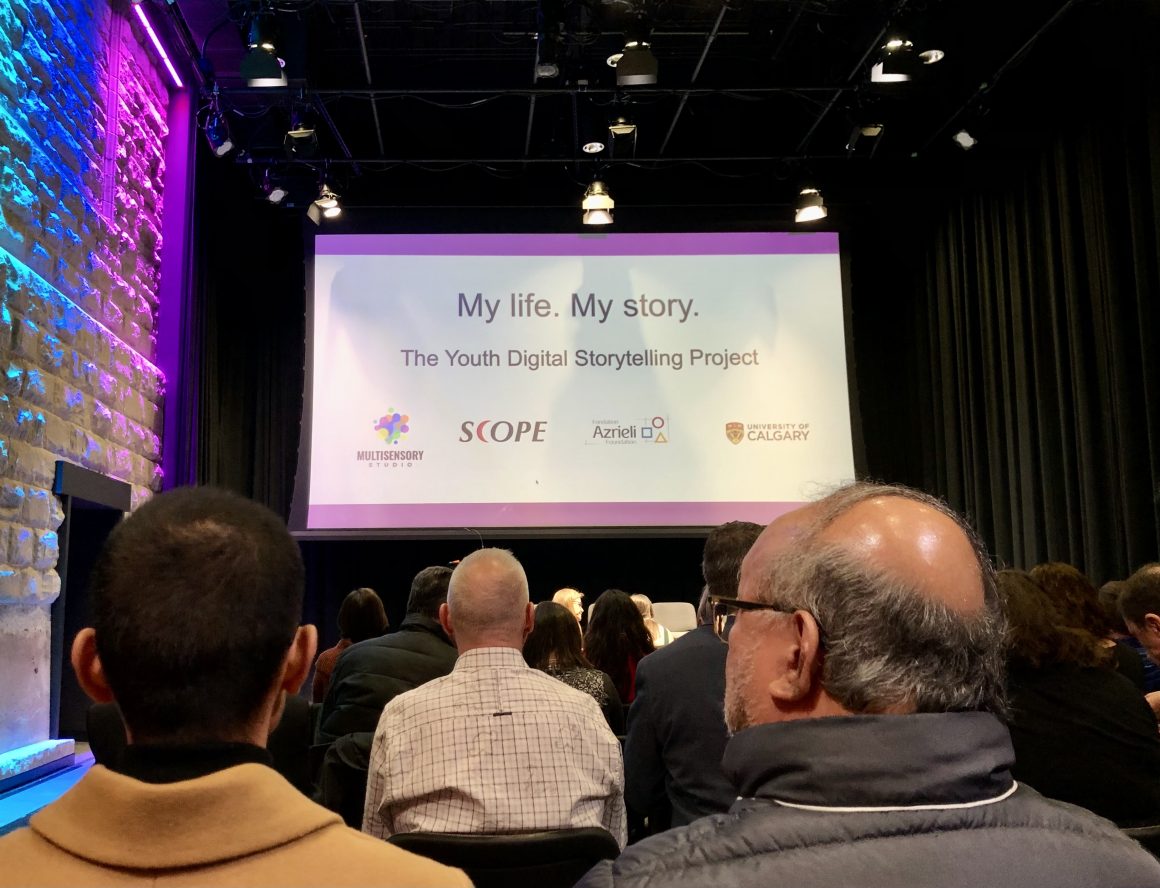
“My Life. My Story.”: Multisensory Studio showcases the work of disabled storytellers
By Aymen Sherwani, December 16 2022—
On November 28, the Multisensory Studio hosted “Youth Digital Storytelling Gala. My Life. My Story.” — a night aimed to celebrate disabled filmmakers, who used video as a medium to tell the stories integral to their lived experiences, with the help of researchers from the University of Calgary’s Faculty of Social Work as well as Calgary SCOPE.
The gala featured and celebrated content made by neurodiverse creators of different abilities and recruited from all across Canada. Showcasing their experiences through self-directed videos, the gala aimed at delivering their first-person stories and realities about living with disabilities or being neurodiverse. One creator filmed the entirety of their story as a continuous shot of themselves narrating their life in American Sign Language (ASL). Experiences across the creators involved also varied. For instance, an older creator made the focal point of his film about his upbringing in the Canadian Maritimes and how living with dyslexia impacted his life, whereas, another told their story about how they feel out of place in a world that pushes neurodivergent and diversely-abled individuals to the margins of society.
“I was built for the world, but the world wasn’t built for me,” is the title of Kelsey Culbert’s film, which focuses on her advocacy work in educating others about disability inclusivity and how it can be fostered in schools and in the arts. “Inclusion doesn’t just mean equipment — it simply means the attitude and the people that are involved in being able to demonstrate inclusion.”
Inclusion, thus, is more than just a statement on equity, diversity and all the other buzzwords. It is a mindset that must be actively embedded within policies and budgets — a recognition that diversely-abled individuals also occupy these spaces, and that their presence should be treated as something other than a novelty.
The organization itself, Multisensory Studio, is dedicated to providing a space to create and share stories with the senses. It showcases artistic work made through multi-sensory mediums to convey knowledge and research. To the studio, the importance of such an endeavour lies in being able to make the arts become more accessible for the disability community.
“Compared to non-disabled people, disabled people experience disproportionately higher rates of abuse, poverty, unemployment, and have lower access to education and housing,” says Dr. Kathleen Sitter, the organizer of this initiative. “The lives of individuals with disabilities are also massively shaped by institutions, attitudes, [as well as] social and historical understandings — perspectives of disabled people have been excluded from decision-making that impacts their lives.”
If there were any takeaways from the “My Life. My Story.” gala, it’s that everyone has the right to be a creator. Everyone has the right to have their voices heard — to create works of art and media that make their lived experiences more widely known. Only through exposure and accessibility can we then foster spaces that seek to accommodate the disabled community.
This article is a part of our Voices section and does not necessarily reflect the views of the Gauntlet editorial board.
